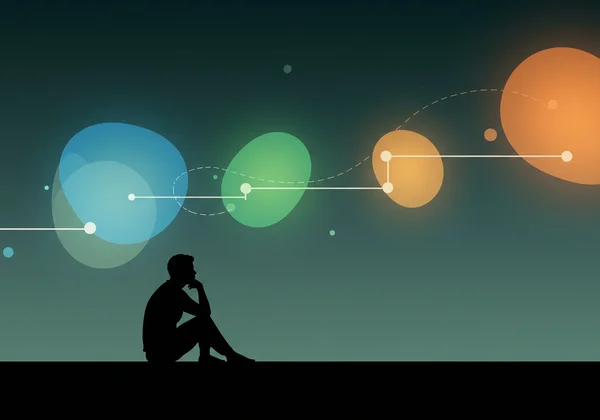A Deep Dive into the Bipolar Spectrum Diagnostic Scale (BSDS)
Navigating the world of mental health can be overwhelming, especially when you're trying to understand complex concepts like mood fluctuations. You might be asking yourself, what is the Bipolar Spectrum Diagnostic Scale (BSDS)? Perhaps you've heard the term and are seeking a clear, reliable explanation. You've come to the right place. This guide is designed to be your definitive resource, breaking down everything you need to know about the BSDS, from its scientific foundations to its practical application. Our goal is to provide clarity and empower you with knowledge.
What is the Bipolar Spectrum Diagnostic Scale (BSDS)?
At its core, the Bipolar Spectrum Diagnostic Scale, commonly known as the BSDS, is a professionally developed screening instrument. It's not a diagnostic test, but rather a tool designed to help individuals and clinicians identify symptoms and traits that are often associated with the bipolar spectrum.
The Core Purpose: Screening for Bipolar Spectrum Traits
The primary purpose of the BSDS is to serve as an initial screening step. It helps to flag potential signs of bipolar disorder by evaluating a person's history of mood episodes, including both manic/hypomanic and depressive states. It provides a structured way to look at experiences that might otherwise seem chaotic or confusing, offering a preliminary insight that can be a crucial first step toward seeking professional evaluation.
Developed by Dr. Ronald Pies: A Brief History and Context
To understand the credibility of the BSDS, it's important to know its origin. The scale was developed by Dr. Ronald Pies, a respected psychiatrist, researcher, and professor. His work aimed to create a more nuanced tool that could detect "softer" signs of bipolarity, which are often missed by other screening methods. This scientific underpinning is what makes the BSDS a trusted starting point for many.

How the BSDS Differs from Other Mood Questionnaires (e.g., MDQ)
You may have heard of other tools like the Mood Disorder Questionnaire (MDQ). While both are valuable, the BSDS has a unique two-part structure. It begins with a narrative or "story" prompt, encouraging you to describe your mood history in your own words, followed by a checklist. This approach is designed to capture the rich, personal context of mood experiences, which a simple yes/no checklist might overlook. If you're curious about this unique approach, you can start your own confidential screening.
The Science Behind the BSDS: Validity and Reliability
A common question is: how accurate is the BSDS test? The value of any screening tool rests on its scientific validation. The BSDS has been the subject of clinical studies to establish its effectiveness.
Understanding Sensitivity and Specificity in Screening Tools
In clinical terms, "sensitivity" refers to a test's ability to correctly identify those with the condition, while "specificity" is its ability to correctly identify those without it. Research has shown that the BSDS has good sensitivity and specificity, making it a reliable instrument for its intended purpose—screening, not diagnosing.
A Summary of Key Research and Clinical Validation Studies
Multiple studies have validated the BSDS as an effective tool for identifying individuals who would benefit from a full clinical assessment for bipolar disorder. These studies, often published in peer-reviewed psychiatric journals, form the evidence base that supports its use. This commitment to science ensures the BSDS self-assessment is grounded in evidence.
A Crucial Distinction: Why a Screening Tool Is Not a Diagnosis
This is the most important point to remember: no online screening tool can replace a comprehensive evaluation by a qualified healthcare professional. The BSDS provides an indicator, a clue, or a starting point for a conversation. A formal diagnosis can only be made by a psychiatrist or other qualified clinician after a thorough assessment that includes a clinical interview and a review of your personal and family medical history. For a deeper understanding of what your results might mean, our BSDS score guide can be a helpful resource.

A Breakdown of the 19 BSDS Questions: Understanding the 'Why'
The unique power of the BSDS lies in its structure. It’s more than just a list of questions; it's a guided reflection on your life's emotional patterns.
Part 1: The Narrative Prompt - Telling Your Mood Story
The test begins by asking you to read a short story about someone with mood swings and then reflect on how much it sounds like you. This narrative approach helps prime your memory and allows you to think about your experiences holistically before diving into specific symptoms.
Part 2: The Symptom Checklist - Identifying Key Indicators
Following the story, you're presented with a checklist of 19 items. Each item describes a thought, feeling, or behavior associated with hypomania or mania. You check off the items that apply to you when you're in an "up" or "activated" state.
How Each Question Contributes to the Overall Picture
The combination of the narrative and the checklist creates a powerful synergy. The story provides the context, and the checklist provides the specific data points. Together, they help to form a more complete and nuanced picture of your mood experiences, which you can then explore further.

Who Should Consider Taking the BSDS Test?
The BSDS is a versatile tool that can serve different people in different ways. Wondering if it's right for you?
For Individuals Experiencing Significant Mood Shifts
If you've noticed extreme highs and lows in your energy, mood, or activity levels, and these shifts have impacted your life, the BSDS can be a private, low-pressure way to explore whether these experiences align with bipolar spectrum characteristics. This is a key reason many people decide to take a free bipolar test.
As a Resource for Concerned Family and Friends
If you're worried about a loved one, understanding the signs of bipolar disorder is a helpful first step. While you cannot take the test for them, learning about the questions asked in the BSDS screening can equip you with the language and understanding to have a supportive conversation.
A Quick Screening Tool for Clinical and Academic Professionals
For therapists, doctors, and students in the mental health field, the BSDS serves as a quick, efficient, and evidence-based tool for preliminary screening in a clinical setting or for educational purposes.
Conclusion: Your Next Step Towards Clarity
Understanding the Bipolar Spectrum Diagnostic Scale (BSDS) is about more than just knowing what the acronym stands for. It's about recognizing it as a scientifically validated, thoughtfully designed tool that can serve as a bridge—a bridge from confusion to clarity, from uncertainty to a constructive conversation with a professional.
Key Takeaways: What You Need to Remember
- The BSDS is a screening tool, not a diagnostic test.
- It was developed by an expert and is backed by scientific research.
- Its unique two-part structure helps capture a nuanced view of your mood history.
- The results are a starting point for a conversation with a healthcare provider.

Are you ready to take a confidential, proactive step in understanding your mood health? Take our free Bipolar Spectrum Diagnostic Scale test now and get your initial results in minutes.
Frequently Asked Questions about the BSDS
Is the BSDS a definitive diagnosis for bipolar disorder?
No, absolutely not. This is the most critical point. The BSDS is a screening tool designed to identify potential signs that warrant further evaluation. A definitive diagnosis can only be made by a qualified healthcare professional after a comprehensive clinical assessment.
How long does the online BSDS test usually take?
Most people can complete the BSDS online test in about 5-10 minutes. The process is designed to be quick and straightforward, allowing you to reflect on your experiences without a significant time commitment.
Are my results from the test confidential?
Yes. At Bsds.me, we prioritize your privacy. All your responses are handled with strict confidentiality. Our goal is to provide a safe and secure space for you to explore your mental health.
What does a "high" or "low" BSDS score really mean?
A score is simply an indicator. A higher score suggests that you have endorsed more symptoms associated with the bipolar spectrum and may benefit from a professional consultation. A low score suggests the opposite. Regardless of the score, if you have concerns about your mood, speaking with a doctor is always the best course of action.
Can I show my test results to my doctor?
Yes, we highly encourage it! The results of your BSDS screening can be an excellent way to start a conversation with your doctor or therapist. It provides them with a structured summary of your experiences and can make your first appointment more focused and productive. Learn more about how to prepare for your doctor's visit.